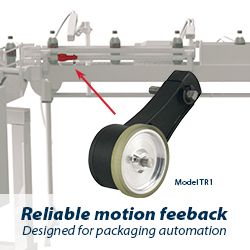How the IoT Can Help Supply Chains Excel Under Stress
With populations across the globe staying indoors and many brick-and-mortar shops temporarily shuttering to slow the spread of COVID-19, retailers are facing a level of demand previously unseen. From groceries to gloves and masks, today’s consumers now need health-critical supplies delivered to their doors, which means retailers need assurance that the manufacturing facilities supplying their products are equipped to perform.
Now more than ever, the IoT is an invaluable resource for manufacturers who want, and need, to optimize the package delivery process. When attached to shipment containers, the IoT affords manufacturers insight into what’s happening at each point of the supply chain, thereby assuring their products reach their destinations in a safe and timely manner. Here’s how manufacturers can deploy IoT devices to secure critical visibility into end-to-end supply chain journeys and alleviate complications along the way.
Protect Products on the Road
Manufacturers are responsible for safely transporting their products from their facilities to their final destinations. Especially for producers of perishable or fragile items (e.g., food or medications), achieving this demands close monitoring of any changes in environmental conditions that may damage the goods. These changes might include fluctuations in temperature, humidity, tilt or tampering, all of which might consequently cause a serious public health issue.
To this end, manufacturers can deploy IoT-enabled devices attached to shipping containers to secure invaluable, up-to-date insights into container conditions. With this data, manufacturers can act quickly to remedy any environmental disturbances that could jeopardize the integrity of their products, as well as target and fix any factors that may cause future issues.
Similarly, using real-time tracking updates collected by IoT devices, manufacturers can assess whether it’s in their best interest to reevaluate their shipment routes for the sake of delivery speed. For example, if delay-inducing obstacles go unnoticed along the shipping journey, then deliveries can fall behind schedule and overall operations can become overwhelmed. This means that manufacturers will fail to fulfill customer orders. However, by identifying that pattern of disruption using IoT solutions, the manufacturer can avoid problematic routes moving forward to accelerate their deliveries.
Communicate with Customers
Because so many of the products being shipped during this time are time-sensitive, customer expectations are that much higher when it comes to getting deliveries on time. Again, the IoT’s location-tracking capabilities can help fulfill customer expectations by enabling manufacturers to keep tabs on container whereabouts. With this information, manufacturers can proactively share up-to-date delivery approximations with their customers and maintain strong alliances.
Being able to provide shipment updates offers customers some peace of mind in an otherwise very hectic time. That said, with such an overwhelming demand for products – coupled with potential decreases in staff availability as a result of the spreading coronavirus – it’s inevitable manufacturers may face some snags along the product journey. To prevent those complications from damaging manufacturers’ relationships with their customers, manufacturers can use the insights provided from IoT devices to address any problems directly and proactively with customers to manage expectations. For example, if a manufacturer discovers that a shipment was lost, it can resend a new unit as soon as possible while informing the customer of the situation so that they know to expect delays. This sort of open dialogue demonstrates the manufacturer’s commitment to customer service and will – hopefully – alleviate customer frustrations wherever possible.
Connect the Entire Shipping Journey
Maintaining insight into shipment conditions and whereabouts is immensely valuable from both an operational and customer service standpoint, but this is only possible if the IoT devices facilitating that insight stay connected to a reliable network across the entire shipping journey. Manufacturing facilities may not always be located near the retailers carrying their goods, which means manufacturers need a global connectivity solution for IoT sensors attached to their containers to work.
A low-power, wide-area network that can transfer small amounts of data – like intel regarding location or container atmosphere – across long ranges is extremely powerful here. A 0G network meets these criteria and can allow manufacturers to secure insights into their shipments for a lower cost than traditional IoT providers, without sacrificing any of the quality. Being a low-energy device, the battery life of the devices linked to the network lasts longer, meaning that manufacturers can rest assured they can get continuous updates on their shipments during the entire supply chain journey.
Due to the coronavirus rapidly spreading, online orders of goods such as food, pharmaceuticals and sanitation products are surging, and manufacturers can’t afford delays or risk product damages. By deploying IoT-enabled sensors in their shipping containers, manufacturers can maintain oversight into shipping conditions, tampering and whereabouts and correct delays or damages as needed to assure their products reach retailers on time and in prime conditions. This way, they can optimize their supply chain to excel despite the increased pressure placed on it and best meet customer expectations during this critical time.
Contributed by Ajay Rane, VP of business development at Sigfox.
Comments (0)
This post does not have any comments. Be the first to leave a comment below.
Featured Product

